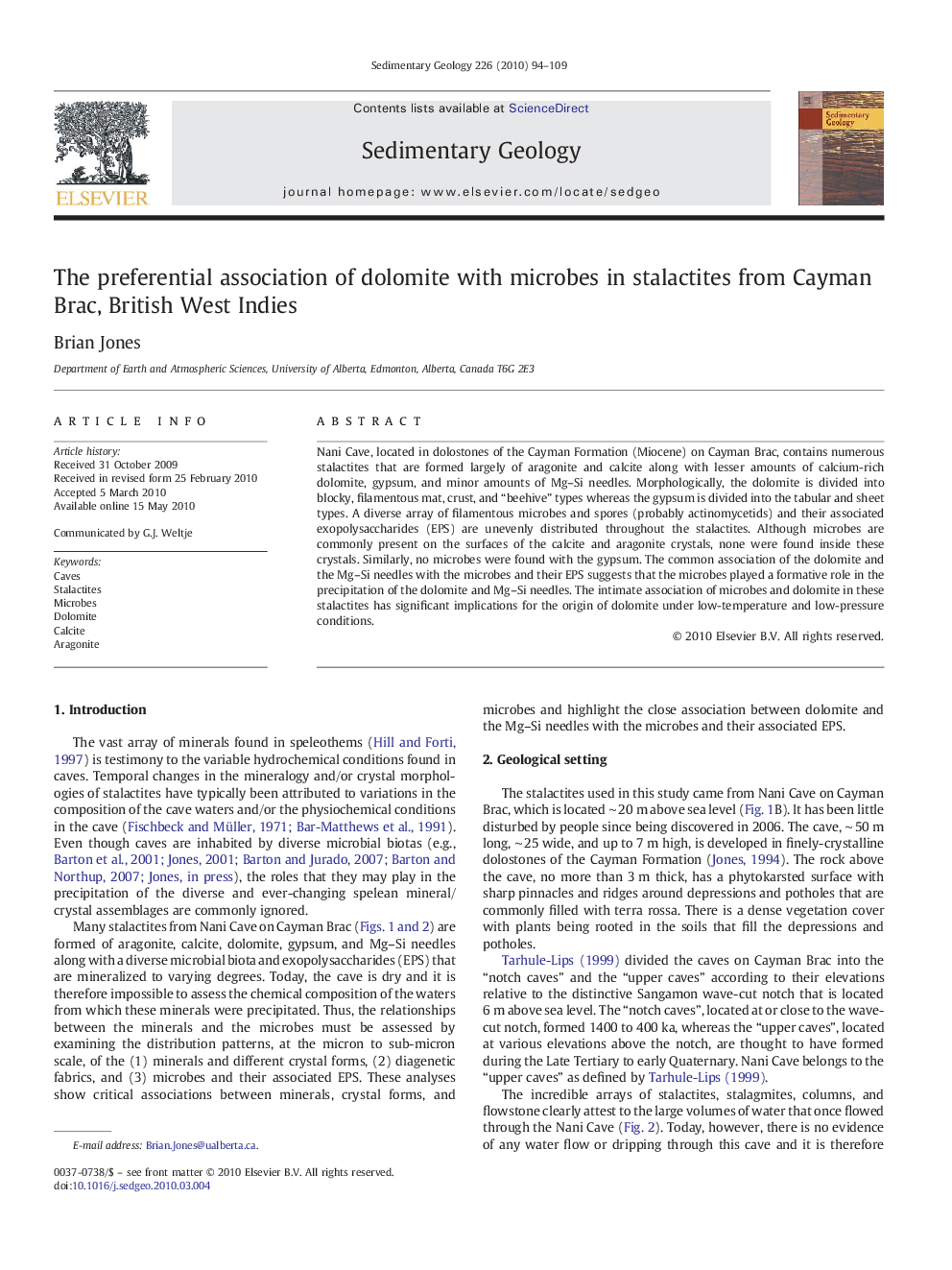| کد مقاله | کد نشریه | سال انتشار | مقاله انگلیسی | نسخه تمام متن |
|---|---|---|---|---|
| 4690184 | 1636126 | 2010 | 16 صفحه PDF | دانلود رایگان |

Nani Cave, located in dolostones of the Cayman Formation (Miocene) on Cayman Brac, contains numerous stalactites that are formed largely of aragonite and calcite along with lesser amounts of calcium-rich dolomite, gypsum, and minor amounts of Mg–Si needles. Morphologically, the dolomite is divided into blocky, filamentous mat, crust, and “beehive” types whereas the gypsum is divided into the tabular and sheet types. A diverse array of filamentous microbes and spores (probably actinomycetids) and their associated exopolysaccharides (EPS) are unevenly distributed throughout the stalactites. Although microbes are commonly present on the surfaces of the calcite and aragonite crystals, none were found inside these crystals. Similarly, no microbes were found with the gypsum. The common association of the dolomite and the Mg–Si needles with the microbes and their EPS suggests that the microbes played a formative role in the precipitation of the dolomite and Mg–Si needles. The intimate association of microbes and dolomite in these stalactites has significant implications for the origin of dolomite under low-temperature and low-pressure conditions.
Journal: Sedimentary Geology - Volume 226, Issues 1–4, 15 April 2010, Pages 94–109